[ad_1]
A southern storm system continues to slowly move east on Sunday morning and bring rain to parts of the Mississippi River Valley.
Interested in Weather?
Add Weather as an interest to stay up to date on the latest Weather news, video, and analysis from ABC News.
After bringing beneficial rain to the Southwest and southern High Plains on Friday and early Saturday, the rain is now falling over areas that don’t need the rain.
Prior to Saturday, Oklahoma City was running nearly 4.5 inches below their average year to date rainfall. On Saturday, Oklahoma City received 1.44 inches of rain — nearly 75 percent of their average for April.
But farther east, the rainfall is not needed. Little Rock, Arkansas, is currently running over 9.5 inches above its average year-to-date rainfall.
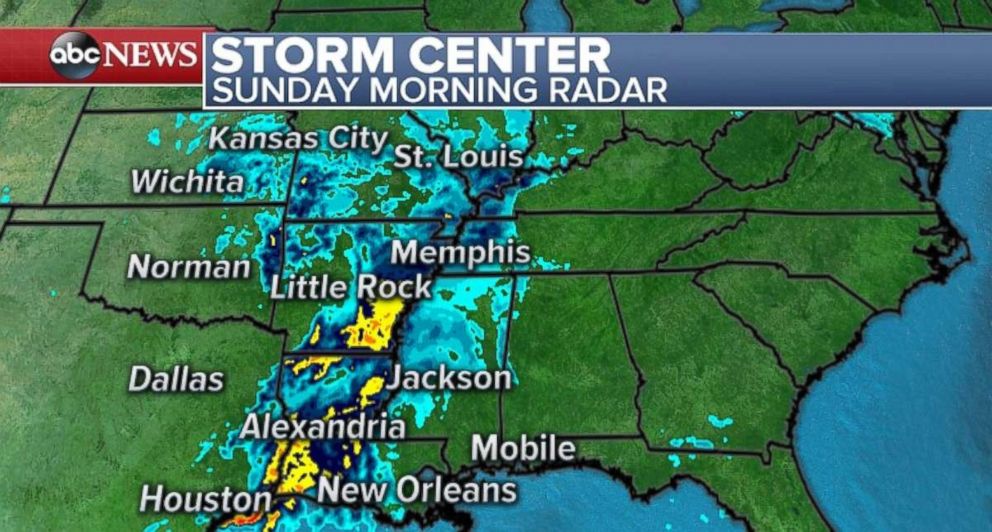 ABC News
ABC NewsThe storm will slowly move through the South today, with heavy rain and strong storms likely from Arkansas to Florida. Isolated flash flooding remains a possibility.
The threat for severe weather is expected to be minimal. Damaging winds and large hail appear to be a localized threat. While not likely, a brief and weak tornado remains possible across parts of Mississippi, Alabama and Florida.
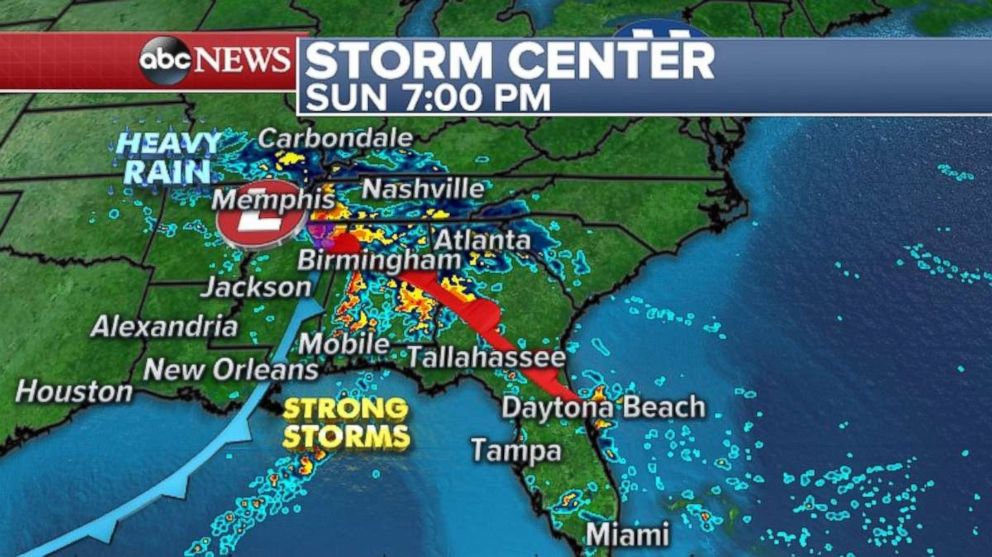 ABC News
ABC NewsThe storms could drop over 2 inches of rainfall in the next 24 hours, therefore there is a threat of isolated flash flooding in the region. The best chances for this would be in parts of northern Georgia where rainfall totals may be locally higher.
On Monday morning, the heaviest rain will move into the Carolinas with the Charleston, South Carolina, and Wilmington, North Carolina, areas at risk for thunderstorms that could cause localized flash flooding.
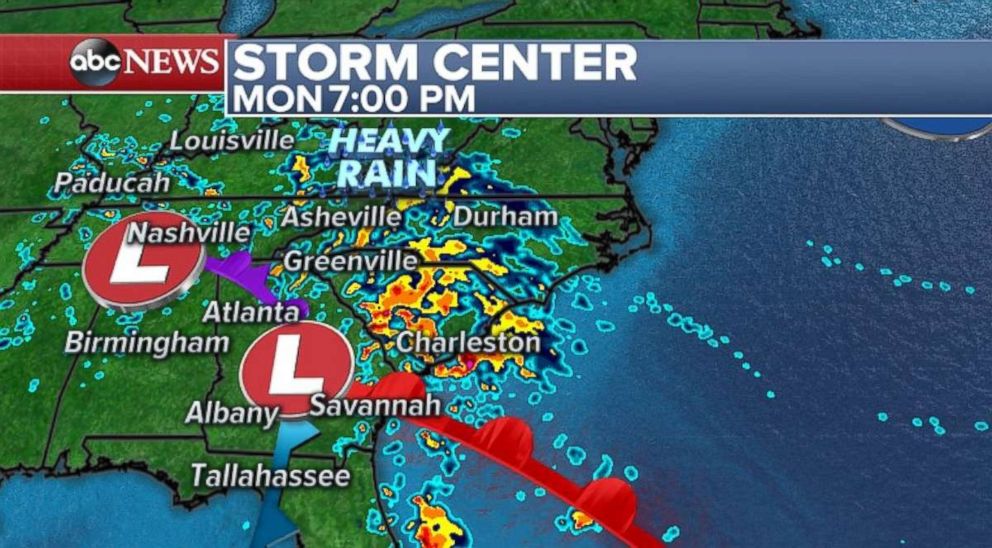 ABC News
ABC NewsThe slow-moving storm will likely move up the East Coast and bring impacts to the major I-95 cities in the Northeast by midweek. At this time it appears as though the storm will have only a minor impact for the Northeast.
Rainfall totals across the Southeast will be anywhere from 2 to 4 inches, and localized flash flooding will remain a threat as the system moves through the region.
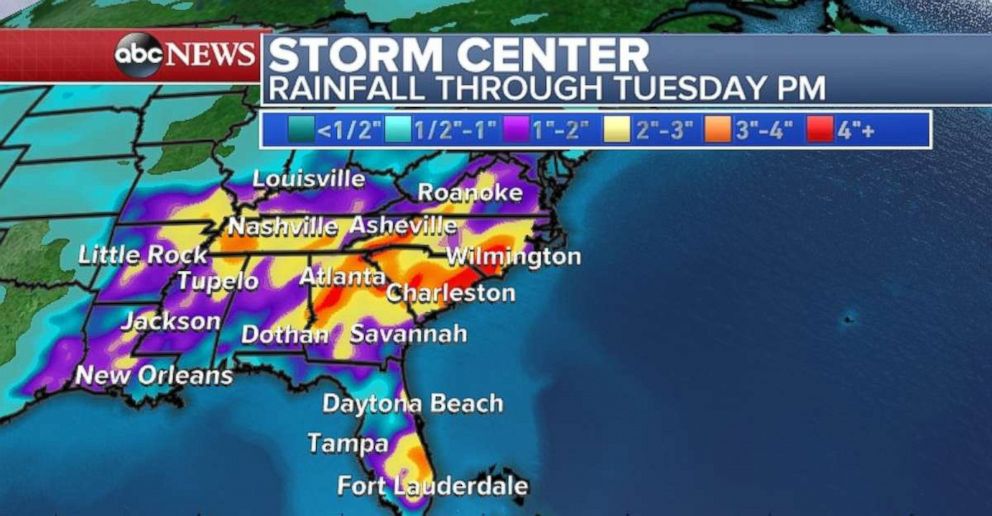 ABC News
ABC NewsSeasonable week ahead
Temperatures are forecast to be nearly seasonable for parts of the Midwest and East for the upcoming week. On Saturday, the Twin Cities in Minnesota finally saw its first 60-degree day of 2018 — nearly a month later than average and just eight days short of the latest 60-degree day on record.
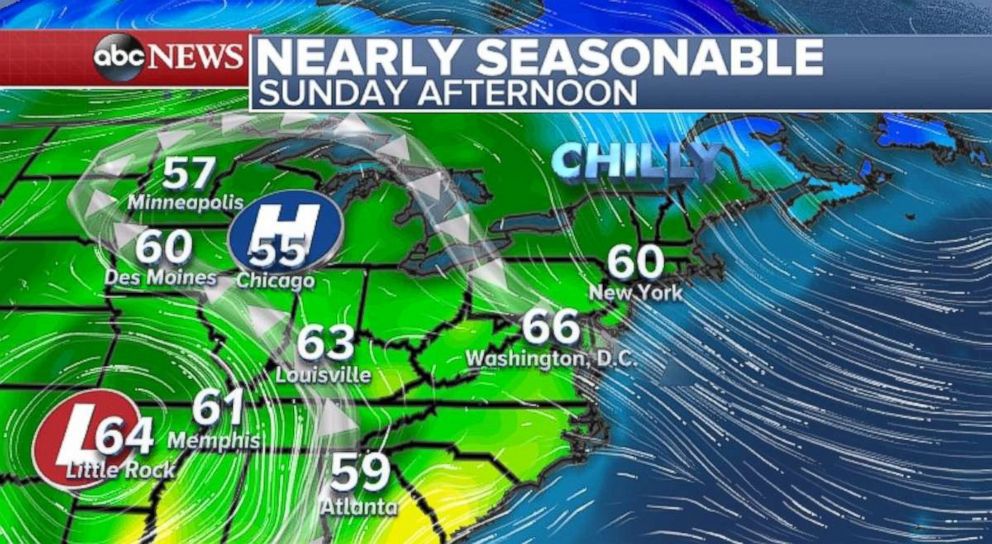 ABC News
ABC NewsTemperatures across much of the Midwest and Northeast are expected to remain within a couple degrees of average through the next several days. In the Northeast, temperatures will be at or above 60 and there are no major warm-ups or cool downs in the near-term forecast. These temperatures are close to seasonable.
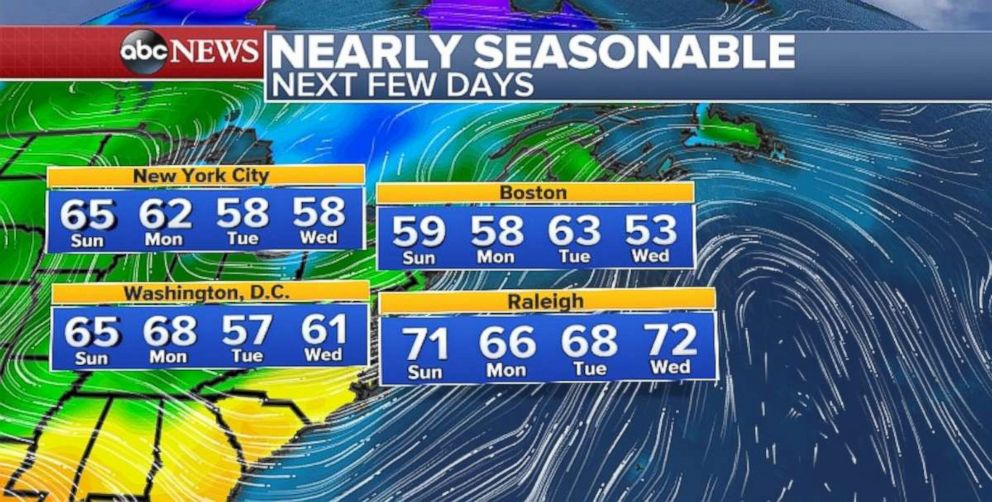 ABC News
ABC NewsHowever, there is increasing confidence that another big dip in the jet stream could be on the horizon toward the end of April. By next week and into the beginning of May there is an increasing likelihood of below-average temperatures across the eastern half of the U.S.
[ad_2]
Source link

